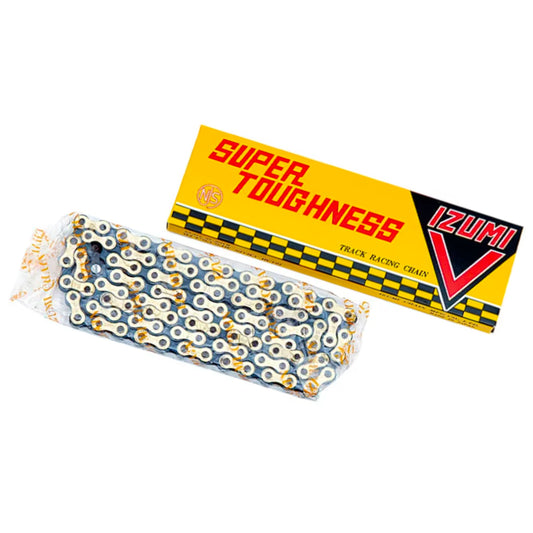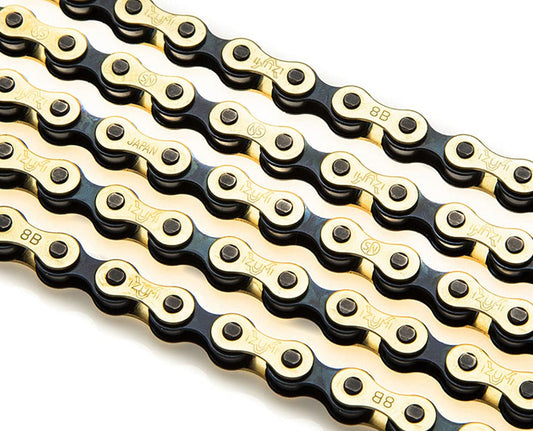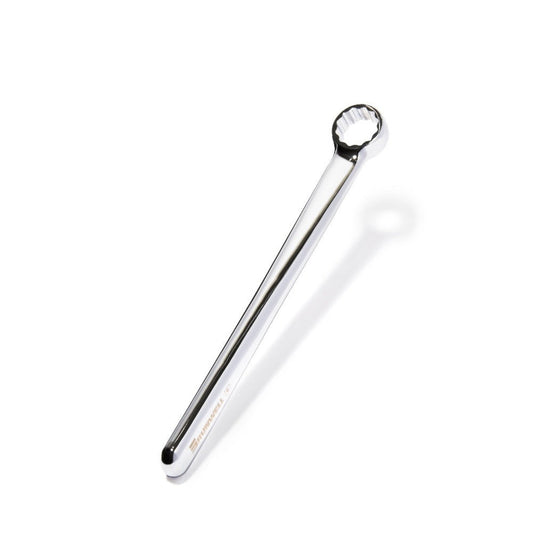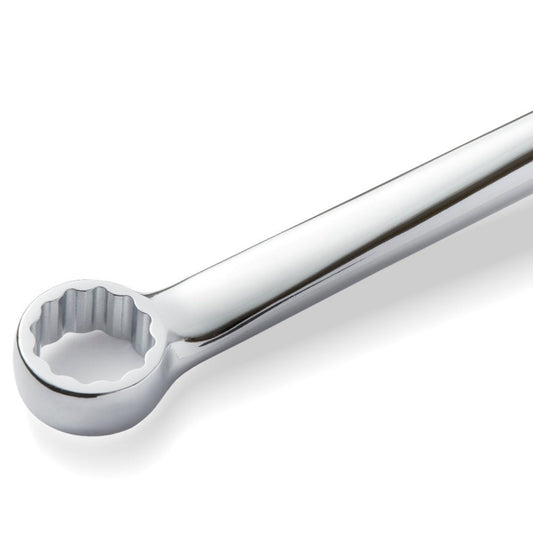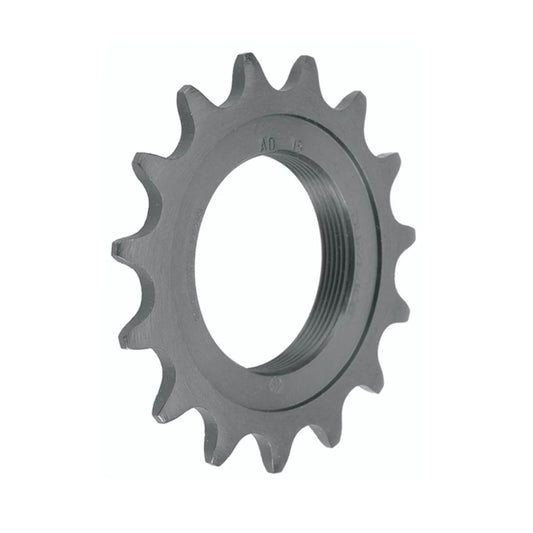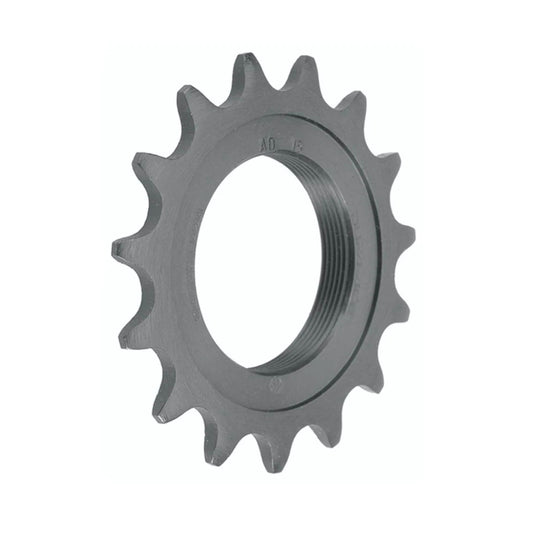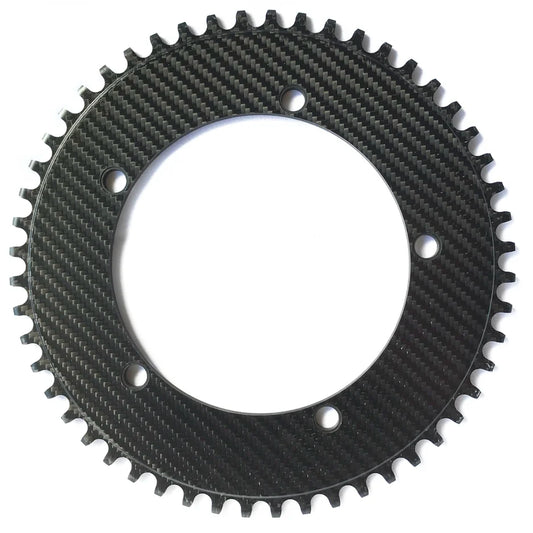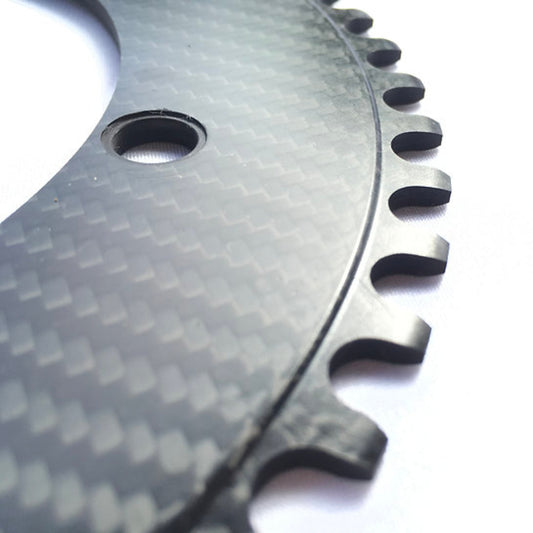If you are new to track cycling, you are probably hearing a lot of random numbers being shouted here and there around the velodrome.
People talk a lot about gearing at the track. A lot! You will hear gear ratio values, gear inches values and maybe even metric development values being shared amongst riders.
Feel a bit lost? Don't worry, we will provide so much data and charts that you will understand everything when you finish reading this article.
The basic way
It makes sense to start with the most common way of talking about gears. Identifying your ratio by the chainring size and then the cog size is easy, makes sense to most track riders and is easily convertible to any similar gearing combination by making simple calculation. You ride a 52 chainring and a 14 cog? Well we'd commonly say that ''you are riding/using 52/14'' . Easy enough, everyone understands and it's easy to convert.
There is an easy way to calculate gear equivalence and most people will agree on this non-scientific way of doing it: 3 chainring teeth are the equivalent of 1 cog tooth. Let's take the 52/14 ratio: the equivalence would be 55/15, 58/16, 49/13 etc.
With of course a small variation between each as showed here:

The non-metric user
Some people will refer to a chainring and cog combo by the distance traveled by the bike when the crank does a full rotation... in inches. Like that makes any sense to anyone. Who measures distance in inches? Anyway. If you are using a 52 chainring with a 14 cog, your gear inches value is ''98''. A lot of people us that system, mostly in the USA and some people even know all the gearing combinations to match any given gear inches value. Props to them.

Now, if you want to know how fast you are going using a gear inches value at any cadence on a 250m track, good luck with the non metric to metric conversion. Hence why someone came with the metric equivalent of the gear inches.
The ''Development Meters'' users
Get your old math books out! If you are into calculating things with pi, you will be happy to create your own chart. If not, just find ours below!
The Development Meters is refering to the distance traveled by the bike when the cranks do a full revolution, in metric values. Makes more sense of course, when riding a track measured in meters.

It will still require you to memorize a boat load of random values that very few people will use in north America. So perhaps not the most practical way of discussing gear size with your fellow riders but most certainly a way to impress them with your math skills.
How to use those values
Gear equivalence would be the first reason you would want to be able to understand any of the many ways to refer to a gear combination or ''development''.
If you are showing up at a race with a set of gears and are far away from the other participants, you need to be able to quickly asses and understand what is the most used ratio. It's never fun to be ''undergear'' and very demanding to be ''overgear''.
In the first case, you will get dropped and in the second case, your legs will be so heavy you will struggle in the following races.
So the best way to discuss gearing with your velodrome friends is to at least understand the basic method and the Gear Inches Method. If you are into the metric system, prepare yourself for a lot of raised eyebrows and questions.
A fun way to apply the Development meters system
See below an example of why you should always aim at riding the black line when competing during individual events like the flying 200m, the kilo and the Pursuit.
It helps understand another key point of riding the track: the shortest distance you travel on the track is the fastest way to go around it! Makes sense of course.
We know how obvious this sounds.
Still, when people are going for a PR, Racing time trial events and qualification events, we rarely see them perfectly riding the black line, even though most people know it is the shortest and fastest way to go around the track.

In fact, when you ride the red line, you are covering a distance of 255 meters, and 265 meters if you are riding the blue line. Adding 5 meters when riding the red line is a lot when the timer is running on a 200m qualification. And if you are riding a 4k pursuit, you will have covered 4080 meters instead of 4000. Seems faster to hug the black line than buying expensive aero equipment.
So instead of comparing speeds, we decided to compare the number of complete crank revolutions a rider would have to power through to complete one lap when riding on each of the 3 painted lines (So 3 different distances)
You can find those complete charts in their dedicated page as well as our Gear Ratio, Cadence and Speed calculator tool to help you choose the right ratio for the right event according to your riding style and strenght/abilities.
See you soon at the velodrome!

